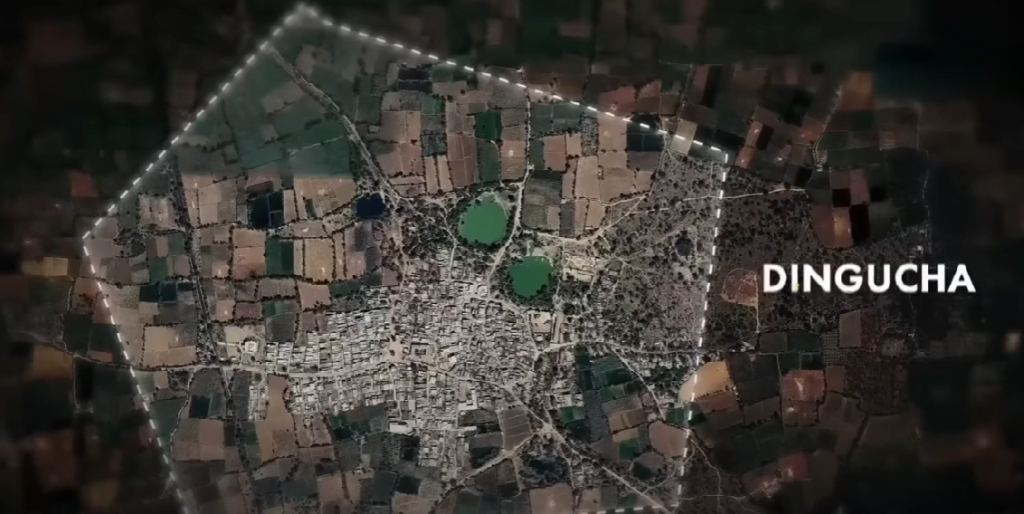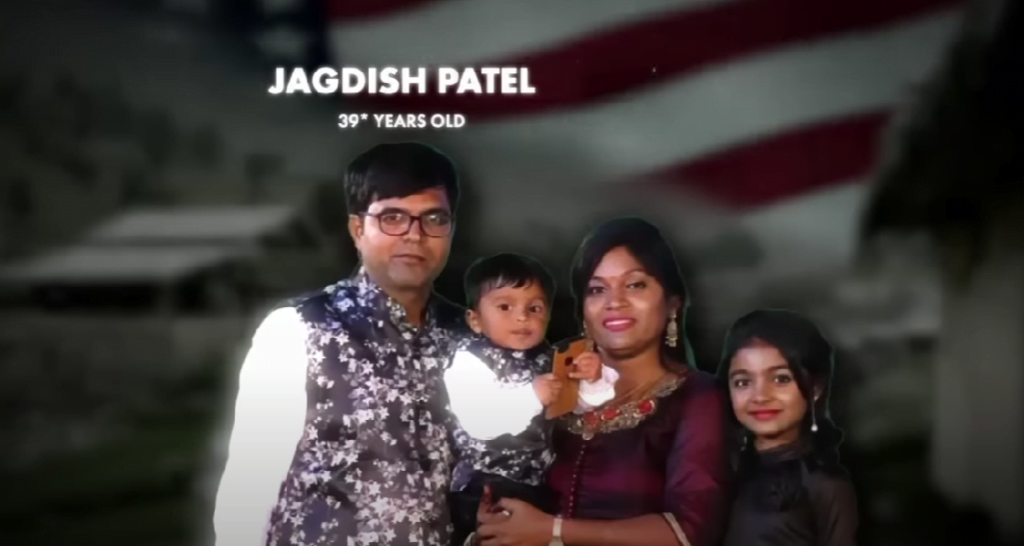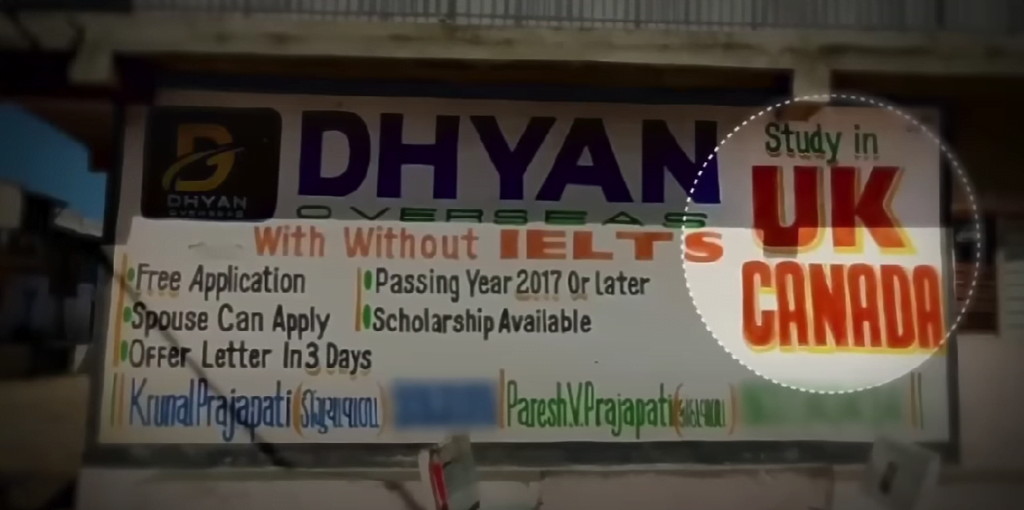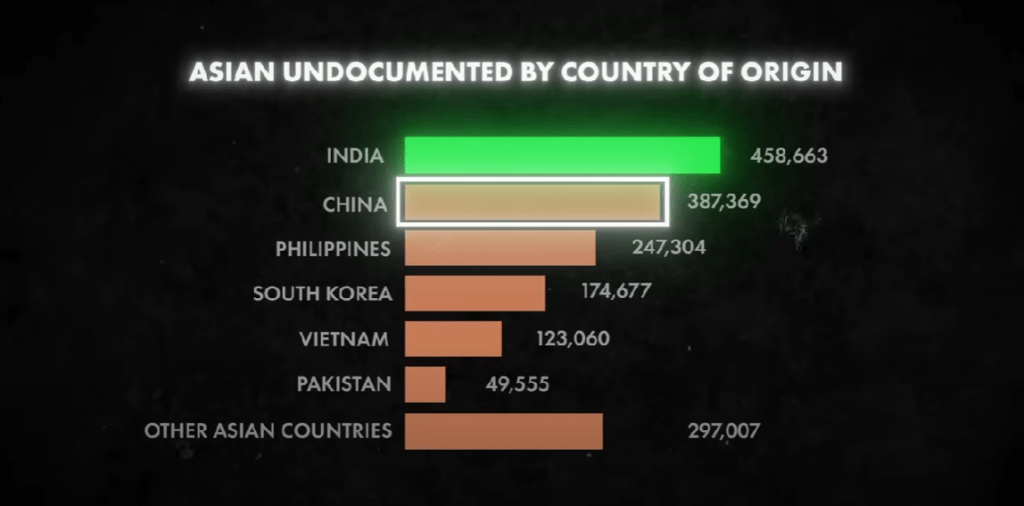Dingucha, a village in Gujarat, has seen 1,800 villagers move away due to unemployment and poverty. Many villagers believe that a better life abroad would be better for their children. In January 2022, Jagdish Patel, his wife, and their two children decided to follow their fellow villagers to Canada. They raised ₹6.5 million to hire an agent to take them to America, using the ‘donkey process’. Jagdish’s wife aspired to work at a beauty salon in America, and Jagdish wanted to provide better education for his children.

Jagdish’s family’s lifeless bodies were discovered by police in Toronto, Canada, within a week of their arrival. The freezing weather and the ‘donkey process’ are common issues faced by thousands of Indians attempting to illegally immigrate to countries like the US and the UK. The US-Mexico border is the World’s Most Dangerous Border, and the process has evolved to include various backdoor entries, with a shift in preference toward entering the United States. In India, numerous visa agencies and companies facilitate this process, with agents involved in transporting individuals called ‘donkers’. Gujarat and Punjab are renowned for being the primary exporters of illegal immigrants, while Haryana has also entered the competitive arena due to rising unemployment. The charges for these services vary based on the package chosen, with agencies offering deluxe travel packages and more economical options. Those who fall prey to these companies may not realize that regular visa fees are never this high or fail to meet certain requirements, leading to circumvented visa applications. This illegal nature often leads to individuals selling their farms and homes or depleting their entire life savings.

Many agencies and companies mislead people with false promises, promising a smooth journey to America and abundant job opportunities. However, these false promises conceal the real challenges and legal hurdles that lie ahead. In January, seven Gujaratis were found dead near Emerson, Canada, near the American border. A 47-year-old US citizen named Steve Shand was arrested in Canada, while five more were found 400 meters into American territory. They claimed to have been walking for 11 hours, carrying a backpack with diapers, toys, and clothes for kids. Despite the failed attempt, at least seven survived. Later, they and the American citizen were arrested by American authorities. The northern border of America, shared with Canada, can experience temperatures as low as -35°C to -40°C. The southern US-Mexico border poses even greater dangers, and those attempting the ‘donkey process’ face even more challenges.

The ‘Donkey route’ from South America begins in Ecuador or Brazil, where obtaining visas is easier for Indians. After arriving, migrants travel through Colombia and Panama to Mexico, passing through the dense jungle known as the Darien Gap. This area is considered one of the most dangerous globally due to its frequent use by drug cartels and guerrilla groups. Tragically, individuals using this route often fall victim to gang violence. Some agents do not pay the donkers in full, leading to the killing of travelers.
After surviving the forest, migrants face Mexico’s scorching desert and the imposing wall, likely constructed during Donald Trump’s presidency. Over 650 people died in a year while trying to cross the US-Mexico border. The decision to invest millions of rupees in the ‘donkey process’ raises questions about the reasons behind the decision. Three main reasons underpin this decision: the lack of food, lack of communication, and the risk of gang violence.

The primary reason for Indians seeking economic opportunities abroad is the belief in the American Dream. Upper and upper-middle class individuals often have access to legal means and good jobs to pursue their aspirations, while lower middle class individuals lack the money or qualifications to do so. Success stories like Mitesh Trivedi’s, who left India for Canada 30 years ago, generate hope and motivate more people to do the same. However, these success stories can put societal or family pressures on families, as they may see it as a matter of family reputation or not being respected in their village.
The number of Indians attempting illegal entry into the US has significantly increased since 2017, with over 30,000 attempts in 2020-21 and 63,927 in 2021-22. Between October 2022 and September 2023, the number further escalated to 96,000, with nearly 100,000 Indians trying to enter the US illegally in a year. Of these, 30,000 were caught in Canada.
India is among the countries attempting the ‘Donkey process’ to enter the US, with Mexico leading the way. India is the top Asian country with 450,000 undocumented Indians in America, slightly higher than China’s 400,000. Rising unemployment in India, particularly in rural areas, has driven many individuals to seek the ‘donkey process’. According to a September 2022 report by the Center for Monitoring Indian Economy, Haryana holds the highest unemployment rate in the country, with 37.3% being unemployed. Thousands of unemployed people in villages are selling family land and gold to raise funds for the risky endeavor. Other routes include Dubai on a tourist visa, staying in shady hotels without food, and traveling in secret containers. Nishchay Sharma, a 20-something from Haryana, successfully completed the Donkey Flight, reaching California within 5 months after traveling through 9 countries and navigating jungles and extreme weather.
The Haryanvi youth, frustrated with joblessness and exam paper leaks, often choose the ‘donkey route’ to escape political persecution. This is the most common reason, but it’s not the only reason. Most people willingly surrender themselves to Border Patrol guards, seeking asylum as a form of protection. Asylum is a form of protection that allows individuals to live in a country despite facing danger in their home country, such as political, religious, or racial discrimination. There are five or six categories of persecution: religious persecution, political persecution, ethnic or regional identity, caste-based persecution, and social group persecution. These individuals often approach the Border Patrol, stating they are seeking asylum. The primary motivation behind the ‘donkey route’ is to seek protection from the authorities, rather than hiding from authorities.
The ‘donkey flight’ is a legal route for individuals seeking asylum in the United States, where they must prove their claims are genuine and not fabricated. This process is crucial as many people may lie and face deportation or a ban on future legal travel to America. For example, Jashanpreet Singh, a 24-year-old openly gay man from Jalandhar, faced discrimination and harassment, leading to physical attacks and a fear of moving to another Indian city. He chose the ‘donkey route’ through Turkey and France to reach the Mexican border, where he applied for asylum after crossing the border.
Asylum is granted to only physically present individuals in the country. Economic migration does not fall under the category of asylum, and individuals undergoing the asylum process often endure months or years of investigation, including potential mistreatment or torture. Processing asylum applications can take years, and even after living in America for years, there is a risk of deportation.
Upon crossing the border, individuals are not immediately presented in immigration court but are first placed in detention centers, where they live in terrible conditions. The officers may be nice, but they may not always be truthful about their reasons for seeking asylum.



